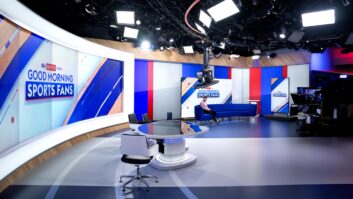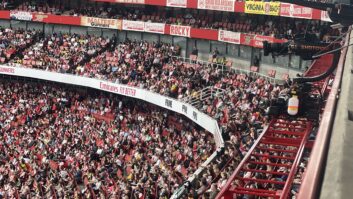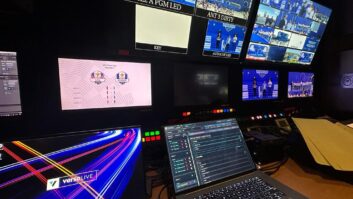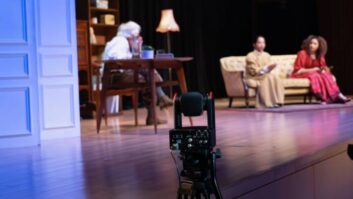From the Sports Broadcast Europe newsletter: Japanese broadcaster NHK has begun experimenting with live 22.2 multichannel sound recordings at swimming, figure skating and basketball events. The audio format is part of NHK’s ultra high definition video scheme, Super Hi-Vision, writes Adrian Pennington.
NHK’s outside broadcast division has already post produced several programmes using 22.2 multichannel sound. With a view to future live broadcasts, it has now performed live mixing of 22.2 during indoor sports events.
‘How is it possible to transfer the emotion of being in a real place to a remote viewer?’, was the question that technicians at NHK’s Science and Technology Research Laboratories (NHK STRL) posed themselves.
SHV’s 4,320 scanning lines and 110º screen viewing angle, presents the possibility of creating a much greater sense of presence and immersion and, says the broadcaster, offers the ability to have both lateral and vertical sound expression over the image.
The current surround sound configuration, 5.1, only reproduces audio on the horizontal plane, leaving a gap in height ambience that configurations of 7.1 and beyond are designed to address.
Indoor figure skating was NHK’s first attempt at live mixing of a sport. Since 24 speakers are required in a 22.2 multichannel sound system, an equivalent or greater number of microphones needed arraying. This included microphones in the ceiling, directional microphones along the rink and even under the ice – using in-ice microphones developed by NHK STRL for the Nagano 1998 Winter Olympics.
Twenty-four microphones were also used at a basketball venue. In one pattern, the microphone arrangement enclosed the court, and in a second, microphones were set up on flagpoles adjacent to the court. To collect court sounds, twelve microphones were set up facing the court and four microphones were installed on each backboard.
For swimming NHK STRL placed 12 microphones for spatial expression, eight to capture audience cheering, and four waterproof basketball developed by the division under selected diving platforms for picking up swimming sounds. Another six basketball were installed along each pool side and four hung from each of two catwalks.
Since 5.1 mixing is currently done in the OB van, NHK constructed a Multichannel Audio Digital Interface (MADI) mixing system and claims to have been able to significantly reduce cabling inside the truck.
“Despite space restrictions after installing speakers and performing tests, we found that a sense of separation and space beyond our expectations could be achieved,” NHK STRL reports.
The experiments aimed to find a way to express a sense of movement using height that matches the SHV visuals.
“We use two ultra-HD cameras in producing a sports event using 22.2 multichannel sound,” explained NHK STRL in a report presented at NAB. “One of these cameras is used as a big-picture wide-coverage camera and the other as a tight-following camera for close-ups. In ultra-HDTV, it is common to show the target scene in its entirety using a wide-coverage camera so as to make full use of wide-screen characteristics.
“The tight-following camera, meanwhile, will seldom pan in the manner of a standard camera but will often be used in a supporting role when the information provided by the wide-coverage camera is insufficient.
“So to express acoustic space, the basic approach is to create sound that matches the video captured by the wide-coverage camera and, when switching to video captured by the tight following camera, to mix-in appealing sound.
“In a live sports broadcast, however, the production sound mixer cannot usually place the microphones at locations of their choosing, so what’s important is whether the microphones can be placed in good positions that don’t hinder the event in question.”
NHK is developing microphones that can effectively collect sound at one point as well as sound effectors that can express space with minimal microphone use.
It plans to test how to express 22.2 acoustic space in an outdoor stadium and how much information is needed when collecting sounds at an outdoor sports venue.
NHK is also presenting its latest SHV advances at IBC and will include a presentation of the last shuttle launch from Kennedy Space Centre with 22.2 sound.
Sign up to receive TVBEurope’s Sports Broadcast Europe newsletter every fortnight.






